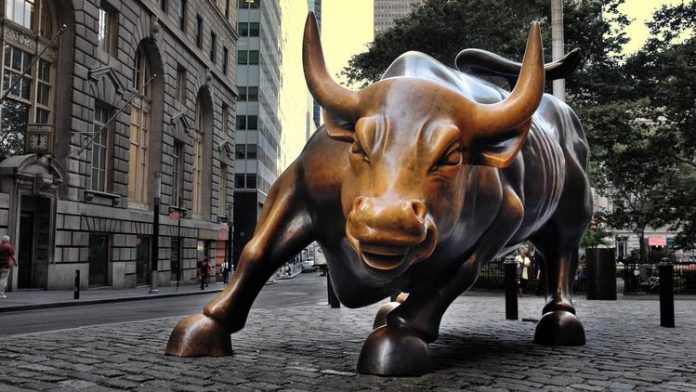Stocks traded flat through noon today following a volatile morning session. The Dow led the market, rising 0.40%, while the S&P and Nasdaq Composite remained mostly unchanged.
A whirlwind of economic fears and rate hike anxiety continues to have investors paralyzed. Last Friday, a weak consumer sentiment reading sent stocks soaring as it suggested a recession was close. Then, yesterday, all those gains were erased after New York Fed President John Williams said that he doesn’t believe a recession is on its way.
“A recession is not my base case right now,” Williams said in a CNBC interview.
“I think the economy is strong. Clearly, financial conditions have tightened and I’m expecting growth to slow this year quite a bit relative to what we had last year.”
He then went on to forecast a net GDP gain of 1.0%-1.5% for the year, down significantly from 5.7% in 2021.
“But that’s not a recession,” Williams added.
“It’s a slowdown that we need to see in the economy to really reduce the inflationary pressures that we have and bring inflation down.”
This was received as bearish, as a “no recession” scenario would allow the Fed to continue hiking rates. Bulls don’t like that.
Williams twisted the knife moments later when he commented on monetary policy.
“We’re far from where we need to be [on rates],” he said.
“My own baseline projection is we do need to get into somewhat restrictive territory next year given the high inflation, the need to bring inflation down and really to achieve our goals. But that projection is about a year from now. Of course, we need to be data dependent.”
That was the last thing bulls wanted to hear, but it wasn’t necessarily a revelation, either. Fed Chairman Jerome Powell essentially made the same remarks after the June FOMC meeting wrapped up on the 15th. That’s why yesterday’s sharp selloff was probably just an overreaction from traders, intensified by the market’s overbought conditions in the short term.
It’s a continuation of the most prevalent trend this year (besides falling share prices):
Heightened volatility.
And, according to Wells Fargo senior equity analyst Christopher Harvey, it might get even worse in the coming weeks.
“We expect significant volatility this summer, with ‘face-ripping’ short-covering rallies followed by economically-inspired market slumps,” Harvey said in a note this morning.
“While a much anticipated market ‘washout’ could catalyze a more sustained move higher, we think the market will not sustain a rally until it believes the Fed will toggle from a 50-75bp tightening to a more mundane 25bp increase.”
Harvey’s note was a breath of fresh air amid a slew of “stinker” takes on Wall Street. Many analysts have stuck to the narrative that rising recession odds could spark a short-term selloff when the exact opposite is true.
It’s all about whether the Fed’s going to moderate its rate hikes or not, which Harvey correctly articulated in his note today.
The jury’s still out on that, however, until more data rolls in, like the June Consumer Price Index (CPI), due out July 13th. In recent weeks, retailers began marking-down general merchandise to make way for more popular goods, namely food and beauty items.
This could show up as a major deflationary force on the June core CPI reading, which excludes food and energy costs. And if core CPI falls well short of the consensus estimate, bulls should have a clear path forward to a massive market melt-up, as core inflation has far outweighed headline inflation when it comes to the Fed’s monetary policy decisions in the past.








